Where does innovation come from? Is it about flashes of insights or eureka moments? No, not at all, flashes of events as a source of innovation is nothing more than a myth…. Most innovations are a result of a conscious-purposeful research for new opportunities and ideas. So, instead of waiting for the creative lighting to strike, we must turn to existing memories and impressions. Because it’s not possible to look forward without looking backward, i.e. we need to connect the pieces of memories of past events in a new and unique way to have new and weird combinations.
For instance, most of us think that Newton’s law of gravity was the result of a eureka moment. No doubt this is the best example of a creative moment, but Newton had not acknowledged it instantly, it took nearly two decades before Newton could finally present the law of gravity. Although that moment of creativity was very special, it was just the beginning of a journey that continued for decades (1666-1687). Newton worked on this idea for a long time. It all accompanied prolonged research, thinking, pondering, sharing of ideas and so on….
Still not convinced by the idea that innovation is not necessarily a product of a eureka moment or flashes of insights or creative or aha moments? Imagine your big idea for a moment, you would suddenly realize that maybe it’s not a big idea, or maybe it needs a lot of refinement, i.e. you would see the potential for some inclusions and some exclusions. And when you finally come up with the thought that your idea is not your best great idea – you feel that your existing idea needs to be nourished and developed. Then, if you stick to your ideation journey, you would not hesitate to make changes in your existing idea or to combine many different ideas. You will realize that creativity can take any of the two forms: 1. Evolutionary Creativity
2. Combinational Creativity
Your existing idea may evolve into something different while you are in the process of making improvements to your original idea, i.e. the process of refinement of your original idea may sometimes result in a completely different idea. Of course, you would be working towards making your original idea a viable one, and this process again may give you new ideas. When a new, disruptive idea appears, it doesn’t usually get implemented in its exact, original form. People make minor changes and improvements and in this way, this idea evolves. Each step along the way is intended to improve the previous model. This way old ideas make progress. And as an ideator, you must acknowledge this.
When we make new connections, our ideas are not just summed up, they are multiplied, ideas are like synergies i.e. the new whole is usually far greater than its parts. This multiplication may be even more effective if we share ideas with others. Share ideas with your peers, or share ideas with people from other fields of knowledge. Collaboration really plays a role in coming up with a revolutionary idea. Yes, the ideas that emerge from different minds cannot emerge from the mind of a single individual.
Different perspectives when combined together give birth to a great idea. For instance, many successful innovators working in Silicon Valley come from different backgrounds, but we see
1. Evolutionary Creativity
2. Combinational Creativity
Your existing idea may evolve into something different while you are in the process of making improvements to your original idea, i.e. the process of refinement of your original idea may sometimes result in a completely different idea. Of course, you would be working towards making your original idea a viable one, and this process again may give you new ideas. When a new, disruptive idea appears, it doesn’t usually get implemented in its exact, original form. People make minor changes and improvements and in this way, this idea evolves. Each step along the way is intended to improve the previous model. This way old ideas make progress. And as an ideator, you must acknowledge this.
When we make new connections, our ideas are not just summed up, they are multiplied, ideas are like synergies i.e. the new whole is usually far greater than its parts. This multiplication may be even more effective if we share ideas with others. Share ideas with your peers, or share ideas with people from other fields of knowledge. Collaboration really plays a role in coming up with a revolutionary idea. Yes, the ideas that emerge from different minds cannot emerge from the mind of a single individual.
Different perspectives when combined together give birth to a great idea. For instance, many successful innovators working in Silicon Valley come from different backgrounds, but we see everyone there works to scale his or her innovation journey and new startups emerge every day. So, what drives these innovations? It attracts the best minds from everywhere – different regions, different cultures, different educational backgrounds, different philosophical beliefs about science.
It’s all about differences in perspectives. Differences that make all the difference in how you approach the problem at hand and the creative thought you’ve been playing with, from a new, fresh direction.
The creative ideas are made up of a sum of many parts. Many are drawn from our knowledge, experience, and research. Many are drawn from the thoughts of others. All come together in a unique form never conceived before, i.e. weird combinations of old ideas.
Often, the great ideas are buried deep beneath the experience and memories of past events. They need nourishment and development not necessarily in a computer or a scientific lab , but may be over a cup of coffee or in a crowded workplace. Ideas can come any time, e.g. during a walk, or while sitting on a bathroom chair. Your creativity has nothing to do with your position,
everyone there works to scale his or her innovation journey and new startups emerge every day. So, what drives these innovations? It attracts the best minds from everywhere – different regions, different cultures, different educational backgrounds, different philosophical beliefs about science.
It’s all about differences in perspectives. Differences that make all the difference in how you approach the problem at hand and the creative thought you’ve been playing with, from a new, fresh direction.
The creative ideas are made up of a sum of many parts. Many are drawn from our knowledge, experience, and research. Many are drawn from the thoughts of others. All come together in a unique form never conceived before, i.e. weird combinations of old ideas.
Often, the great ideas are buried deep beneath the experience and memories of past events. They need nourishment and development not necessarily in a computer or a scientific lab , but may be over a cup of coffee or in a crowded workplace. Ideas can come any time, e.g. during a walk, or while sitting on a bathroom chair. Your creativity has nothing to do with your position, at some instances creative ideas float in your mind while you are moving and at other instances this may happen when you are static. Diverse environmental settings may result in a variety of quality ideas.
Creative thinking lets our brains make connections between seemingly unrelated ideas. This is not necessarily an inherent characteristic, but also can be developed through practice. And as new ideas are nothing more than the weird and curious combinations of old ideas, you must start looking backward to connect the dots and when you will be able to connect the dots in a unique and special way, you would be able to find curious combinations, new possibilities and new ideas.
This is the mindset with which you can advance your ideation journey.
Follow us:
Facebook : Think Different Nation
Instagram : Think Different Nation
Twitter : @TDN_Podcast
at some instances creative ideas float in your mind while you are moving and at other instances this may happen when you are static. Diverse environmental settings may result in a variety of quality ideas.
Creative thinking lets our brains make connections between seemingly unrelated ideas. This is not necessarily an inherent characteristic, but also can be developed through practice. And as new ideas are nothing more than the weird and curious combinations of old ideas, you must start looking backward to connect the dots and when you will be able to connect the dots in a unique and special way, you would be able to find curious combinations, new possibilities and new ideas.
This is the mindset with which you can advance your ideation journey.
Follow us:
Facebook : Think Different Nation
Instagram : Think Different Nation
Twitter : @TDN_Podcast
 1. Evolutionary Creativity
2. Combinational Creativity
Your existing idea may evolve into something different while you are in the process of making improvements to your original idea, i.e. the process of refinement of your original idea may sometimes result in a completely different idea. Of course, you would be working towards making your original idea a viable one, and this process again may give you new ideas. When a new, disruptive idea appears, it doesn’t usually get implemented in its exact, original form. People make minor changes and improvements and in this way, this idea evolves. Each step along the way is intended to improve the previous model. This way old ideas make progress. And as an ideator, you must acknowledge this.
When we make new connections, our ideas are not just summed up, they are multiplied, ideas are like synergies i.e. the new whole is usually far greater than its parts. This multiplication may be even more effective if we share ideas with others. Share ideas with your peers, or share ideas with people from other fields of knowledge. Collaboration really plays a role in coming up with a revolutionary idea. Yes, the ideas that emerge from different minds cannot emerge from the mind of a single individual.
Different perspectives when combined together give birth to a great idea. For instance, many successful innovators working in Silicon Valley come from different backgrounds, but we see
1. Evolutionary Creativity
2. Combinational Creativity
Your existing idea may evolve into something different while you are in the process of making improvements to your original idea, i.e. the process of refinement of your original idea may sometimes result in a completely different idea. Of course, you would be working towards making your original idea a viable one, and this process again may give you new ideas. When a new, disruptive idea appears, it doesn’t usually get implemented in its exact, original form. People make minor changes and improvements and in this way, this idea evolves. Each step along the way is intended to improve the previous model. This way old ideas make progress. And as an ideator, you must acknowledge this.
When we make new connections, our ideas are not just summed up, they are multiplied, ideas are like synergies i.e. the new whole is usually far greater than its parts. This multiplication may be even more effective if we share ideas with others. Share ideas with your peers, or share ideas with people from other fields of knowledge. Collaboration really plays a role in coming up with a revolutionary idea. Yes, the ideas that emerge from different minds cannot emerge from the mind of a single individual.
Different perspectives when combined together give birth to a great idea. For instance, many successful innovators working in Silicon Valley come from different backgrounds, but we see everyone there works to scale his or her innovation journey and new startups emerge every day. So, what drives these innovations? It attracts the best minds from everywhere – different regions, different cultures, different educational backgrounds, different philosophical beliefs about science.
It’s all about differences in perspectives. Differences that make all the difference in how you approach the problem at hand and the creative thought you’ve been playing with, from a new, fresh direction.
The creative ideas are made up of a sum of many parts. Many are drawn from our knowledge, experience, and research. Many are drawn from the thoughts of others. All come together in a unique form never conceived before, i.e. weird combinations of old ideas.
Often, the great ideas are buried deep beneath the experience and memories of past events. They need nourishment and development not necessarily in a computer or a scientific lab , but may be over a cup of coffee or in a crowded workplace. Ideas can come any time, e.g. during a walk, or while sitting on a bathroom chair. Your creativity has nothing to do with your position,
everyone there works to scale his or her innovation journey and new startups emerge every day. So, what drives these innovations? It attracts the best minds from everywhere – different regions, different cultures, different educational backgrounds, different philosophical beliefs about science.
It’s all about differences in perspectives. Differences that make all the difference in how you approach the problem at hand and the creative thought you’ve been playing with, from a new, fresh direction.
The creative ideas are made up of a sum of many parts. Many are drawn from our knowledge, experience, and research. Many are drawn from the thoughts of others. All come together in a unique form never conceived before, i.e. weird combinations of old ideas.
Often, the great ideas are buried deep beneath the experience and memories of past events. They need nourishment and development not necessarily in a computer or a scientific lab , but may be over a cup of coffee or in a crowded workplace. Ideas can come any time, e.g. during a walk, or while sitting on a bathroom chair. Your creativity has nothing to do with your position, at some instances creative ideas float in your mind while you are moving and at other instances this may happen when you are static. Diverse environmental settings may result in a variety of quality ideas.
Creative thinking lets our brains make connections between seemingly unrelated ideas. This is not necessarily an inherent characteristic, but also can be developed through practice. And as new ideas are nothing more than the weird and curious combinations of old ideas, you must start looking backward to connect the dots and when you will be able to connect the dots in a unique and special way, you would be able to find curious combinations, new possibilities and new ideas.
This is the mindset with which you can advance your ideation journey.
Follow us:
Facebook : Think Different Nation
Instagram : Think Different Nation
Twitter : @TDN_Podcast
at some instances creative ideas float in your mind while you are moving and at other instances this may happen when you are static. Diverse environmental settings may result in a variety of quality ideas.
Creative thinking lets our brains make connections between seemingly unrelated ideas. This is not necessarily an inherent characteristic, but also can be developed through practice. And as new ideas are nothing more than the weird and curious combinations of old ideas, you must start looking backward to connect the dots and when you will be able to connect the dots in a unique and special way, you would be able to find curious combinations, new possibilities and new ideas.
This is the mindset with which you can advance your ideation journey.
Follow us:
Facebook : Think Different Nation
Instagram : Think Different Nation
Twitter : @TDN_Podcast 